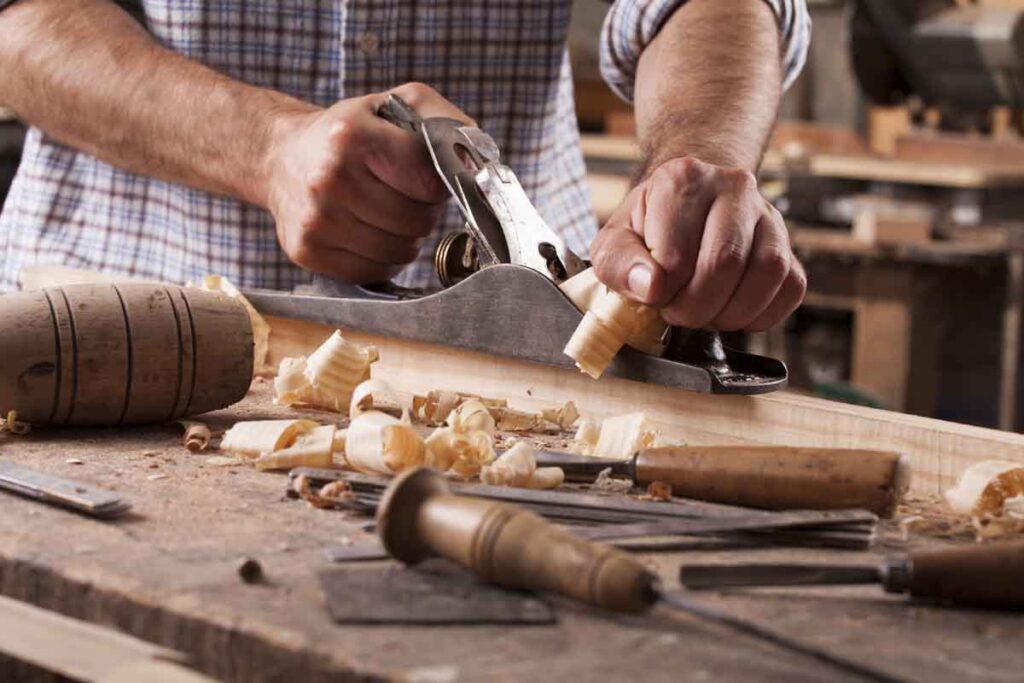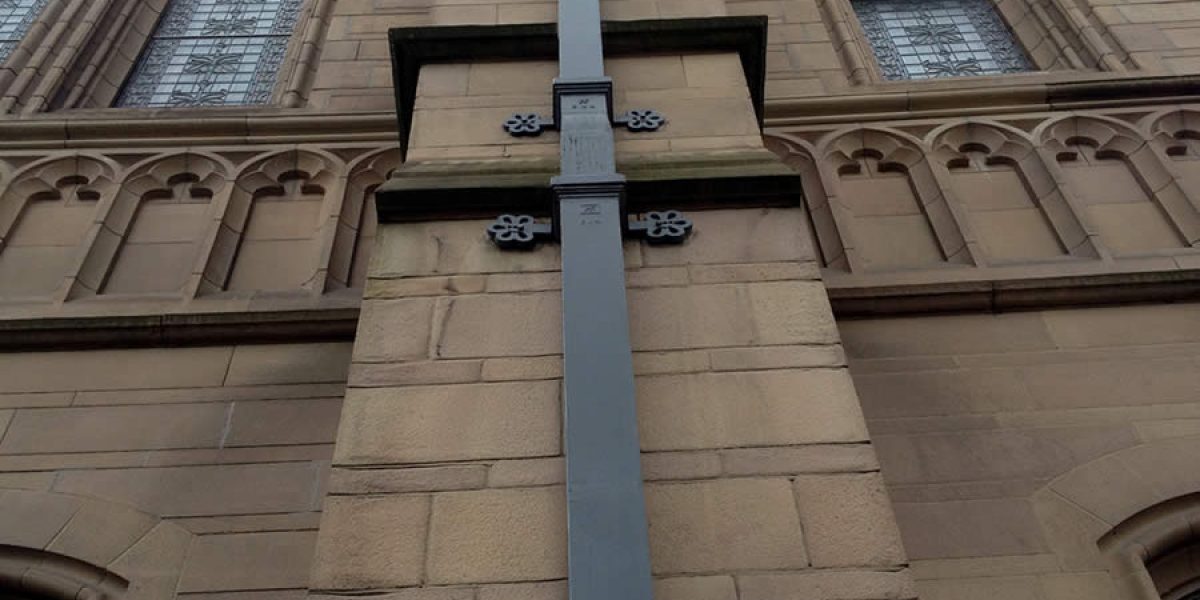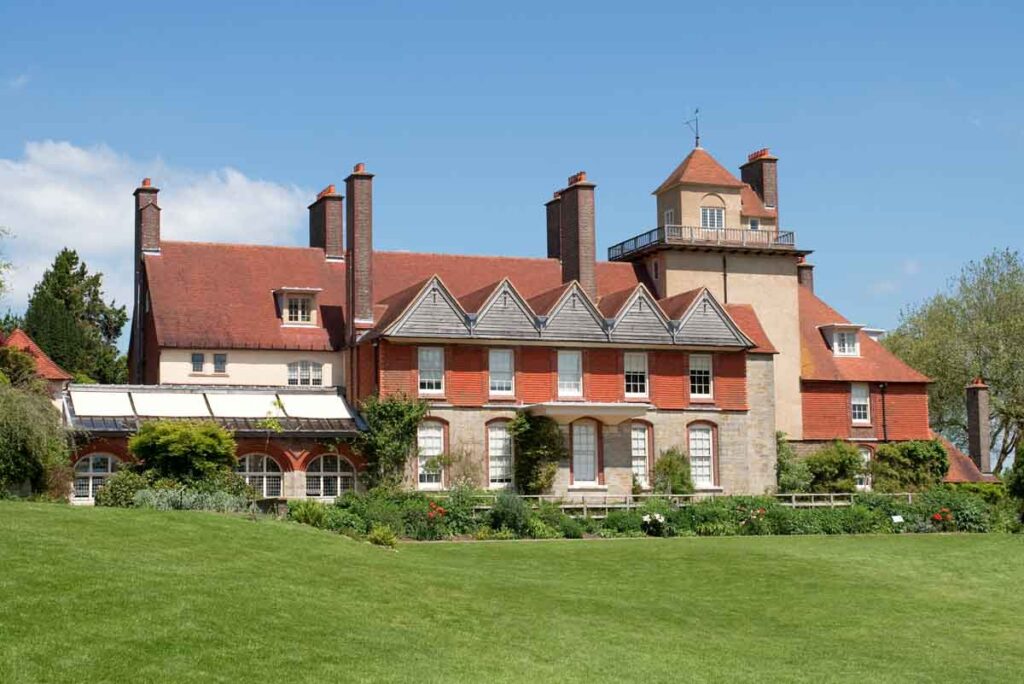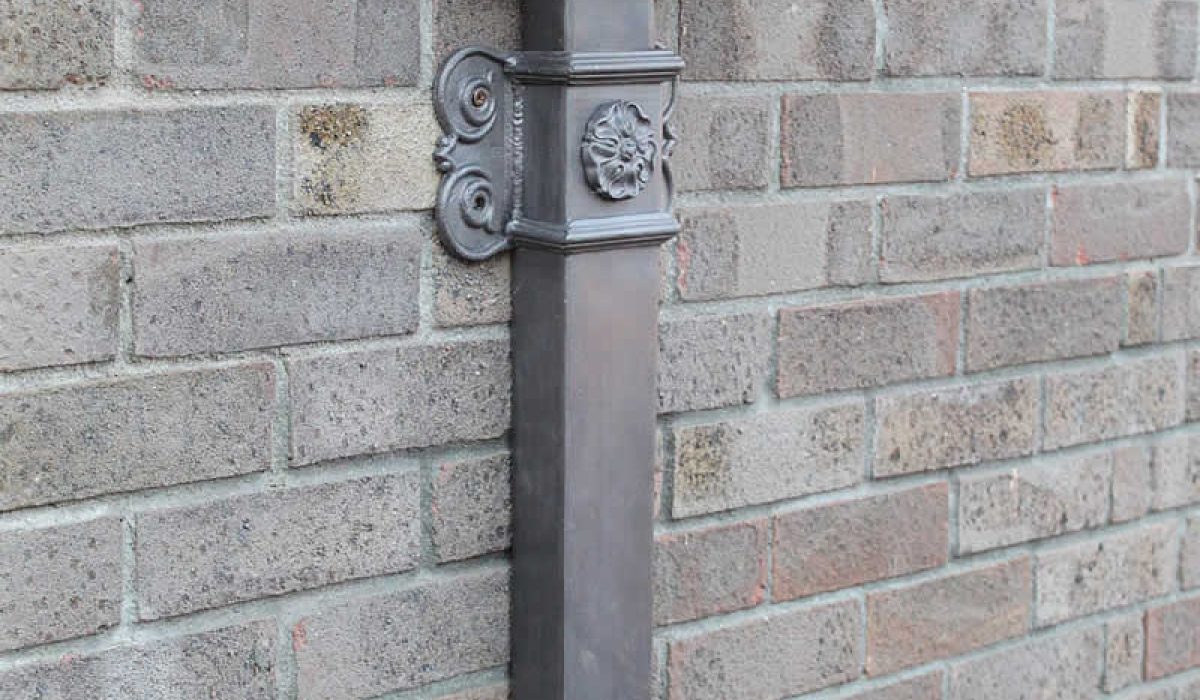


You walk up the steps of the historic house and are immediately struck by the beauty of the exterior. The stonework, wood accents, and decorative details create an inviting facade with a timeless quality. As you explore inside, the artistic touches continue to delight. Intricate wood panelling, stained glass windows, and handcrafted tilework reflect the ethos of the Arts and Crafts movement that inspired the home’s design over a century ago.
While styles have come and gone, the focus on craftsmanship and natural materials in Arts and Crafts architecture has enduring appeal. These homes were meant to be liveable works of art, celebrating simplicity, quality, and warmth. It’s no wonder many have been cherished for generations. The next time you pass a home with stone walls, timber accents or a welcoming front porch, consider that it may be an Arts and Crafts treasure, built to stand the test of time through its fine craftsmanship and handmade beauty. Such homes remind us to value quality over quantity and the human touch that brings soul to any space.
The Arts and Crafts movement was a reaction against the industrialisation of the 19th century. Pioneers like William Morris believed that craftsmanship was being lost in mass production. They championed a return to traditional crafts and building techniques that valued quality and artistic expression.
The Arts and Crafts philosophy centred around craftsmanship, simplicity, and harmony with nature. Followers believed buildings should be constructed using local materials and traditional methods, blending in with the surrounding landscape. Ornate Victorian details were rejected in favour of simpler, more rustic designs.
Within the structure, the highest quality work and natural materials were used. Stone, brick, wood, and tile were preferred over manufactured components. Skilled artisans and craftsmen were employed to handcraft elements like stained glass windows, carved staircases, and mosaic fireplaces. The result was a celebration of materials, texture, and the human touch.
This philosophy also extended to the integration of the building with its site. Arts and Crafts architects strove to design homes that suited their location and environment. They used local stones and timbers, designed spacious verandas to embrace outdoor living, and incorporated natural motifs into their work. The overall effect was casual warmth, comfort, and connection to the land.
The Arts and Crafts movement produced buildings beloved for their attention to detail, high-quality craftsmanship, and harmony with nature. These ideals remain an inspiration and a standard for architectural excellence over a century later. The handcrafted, custom work of the Arts and Crafts era is a testament to what is possible when design and construction value artistry over expediency.
Stone was also famous, used for fireplaces, foundations, and accents. Rough, unfinished stones gave homes an organic, naturalistic feel. Stones were frequently sourced locally. The stones’ irregular shapes and varied colours gave each home a unique character.
The tile was used decoratively, especially around fireplaces. Colourful ceramic tiles, often with floral or geometric patterns, added visual interest and handcrafted appeal. Copper accents like lighting fixtures, hardware, gutters, and downspouts were also familiar, chosen for their natural patina and longevity.
The natural materials and craftsmanship of Arts and Crafts homes have allowed them to age gracefully. Their timeless quality and connection to nature help explain why these homes remain so appealing today. Authenticity is valued, and modern renovations aim to preserve the original character of these handcrafted dwellings. Natural materials create warmth and texture that stand the test of time.
The Arts and Crafts movement was defined by its emphasis on traditional craftsmanship and handmade details. Arts and Crafts buildings are filled with decorative accents meticulously made by hand, not mass-produced. These ornate yet functional details give Arts and Crafts-style homes distinctive character and lasting appeal.
Elaborate stained glass windows were a hallmark of the Arts and Crafts era. Geometric patterns, natural motifs like leaves and flowers, and earthy jewel tones were typical of the style. The glass was handmade and hand cut, then carefully assembled into beautiful windows that filled homes with warm, colourful light. Stained glass lent privacy and beauty to staircases, hallways, and other transitional spaces.
Wood was a fundamental building material for Arts and Crafts homes for floors, walls, ceilings, and architectural details—skilled woodworkers handcrafted trims, brackets, spandrels, beams, and other accents. Natural wood tones were usually left unpainted to showcase the quality and grain. Dark, heavy oak was frequently used for staircases, mantels, and built-in cabinetry. The simple yet sturdy appearance conveyed a sense of rustic elegance.

While wood and stone were dominant materials, hand-wrought metal accents added decorative touches, especially exteriors. Craftsmen handmade everything from door hinges to gutter brackets to lighting fixtures. Copper, iron, and bronze were popular hardware, railings, weathervanes, and more choices. The handcrafted imperfections gave metalwork a charming Old World feel that contributed to the handmade aesthetic.
The handcrafted details in Arts and Crafts homes reflect the builder’s passion for quality and craftsmanship. Although the era spanned just a few decades, these homes remain timeless today because of the care, artistry, and skill infused into every handmade element. The human touch gives the Arts and Crafts style its lasting power to delight.
The interior design of Arts and Crafts homes reflects the movement’s emphasis on high-quality craftsmanship, natural materials, and simplicity.
The furniture in Arts and Crafts homes was typically oak, with simple, squared lines and little ornamentation. Upholstery fabrics often featured nature-inspired prints, especially William Morris designs. Bookcases settles (bench seats), and inglenooks (bench seats in a fireplace recess) were popular and provided cosy spaces for reading.
Interior woodwork like staircases, mouldings, and built-in cabinetry exhibited exceptional craftsmanship using traditional joinery techniques like mortise and tenon and dovetail joints. Native woods were usually left unpainted to showcase their natural beauty, often with a matte varnish or oil finish.
Lighting fixtures were typically made of copper, bronze or hammered metal to complement the earthy, natural feel. Stained glass lampshades, lanterns, and candlelight provided a warm glow.
Massive stone or brick fireplaces were central features of Arts and Crafts rooms. Built-in bookcases and inglenooks often flanked them. The fireplace recess sometimes included decorative tiles, typically with floral or geometric motifs.
Plaster walls were usually left plain or stencilled with simple patterns. Wood plank floors were standard and sometimes had decorative parquetry or marquetry inlays. Patterned carpets, especially Oriental-style rugs, provided warmth underfoot.
The hallmarks of the Arts and Crafts interior — high-quality materials, superb craftsmanship, and simplicity — give these homes a timeless appeal. Though the style is over a century old, the natural, handcrafted ambience of an Arts and Crafts house still feels fresh, cosy and highly liveable today. The human touch and artisanal details create an atmosphere that mass-produced homes often lack.
The Arts and Crafts movement valued craftsmanship in all aspects of design and construction. Nowhere is this more evident than in the cast iron gutters, hopper rainwater heads and downpipes commonly found on Arts and Crafts buildings. These practical yet decorative features highlight the balance of form and function that defines the style.
Cast iron was a material that allowed for intricate designs to be incorporated into functional elements like gutters and pipes. The material was moulded into shape, so curved lines, stamps, and other embellishments could easily be added. The gutters and pipes were usually custom-made for each building, allowing them to seamlessly integrate into the overall design.

The gutters, downspouts and other pipes were designed to naturally lead the eye’s gaze to other notable features of the building, like brackets, beams or the roofline itself. The fluid, curving lines were meant to create a sense of harmony between all the building elements. The dark, matte finish of cast iron also helped these fixtures blend into the typical earth-toned colour schemes favoured in the Arts and Crafts style.
Cast iron is a highly durable material, so gutters, downspouts and pipes installed during the Arts and Crafts era have often lasted for over a century without needing replacement. The weight and longevity of cast iron give Arts and Crafts buildings a sense of permanence and stability. The patina that develops over time only adds to their rustic, handcrafted appeal.
Even functional elements received artistic consideration—stamps, curves and other decorative touches elevated cast iron from purely practical to decorative. The gutters, downspouts and pipes exhibit the same attention to detail and high craftsmanship found throughout Arts and Crafts buildings. Their decorative and functional qualities are balanced, highlighting how artistic intention shaped all Arts and Crafts design aspects.
The gutters, downspouts and pipes on Arts and Crafts buildings may be easily overlooked, but they embody the style’s core principles. Their seamless integration, built-to-last quality and decorative details are a testament to the value placed on craftsmanship and artistry in all parts of the building. Functional elements were not an afterthought but a chance to further express the harmony between art and purpose.
Certainly! The Arts and Crafts movement, which originated in Britain in the late 19th and early 20th centuries, emphasised traditional craftsmanship in simple forms, and often used medieval, romantic, or folk decoration styles. Here are five notable Arts and Crafts houses/buildings in the UK that are open to the public:
1. Red House (Bexleyheath, London)
Red House is a temple to the Arts and Crafts movement commissioned by designer William Morris. Its unique design showcases medieval-inspired architecture, stained glass, and original Morris wallpapers.
2. Blackwell (Bowness-on-Windermere, Lake District)
Overlooking Lake Windermere, Blackwell is an exceptional Arts and Crafts design example. It boasts beautiful herringbone floors, carved wooden panels, and stained glass.
3. Wightwick Manor (Wolverhampton, West Midlands)
Built by Theodore Mander, a Victorian industrialist, Wightwick is adorned with Morris wallpapers, fabrics, and De Morgan tiles. It stands as a testament to the Victorian fascination with medieval art.
4. Kelmscott Manor (Oxfordshire)
The country home of William Morris, the founder of the Arts and Crafts movement. A Grade I listed farmhouse, it exemplifies traditional craftsmanship and houses an array of Morris’s designs and artworks.
Most of these places are managed by the National Trust or local conservation organisations, ensuring they remain preserved for future generations. Always check opening times and visitor guidelines before visiting.

The Arts and Crafts movement ended around the 1920s, but the style has revived in recent decades. Homeowners and designers alike have rediscovered the appeal of craftsmanship, natural materials, and simplistic designs.
In an age of mass production and cookie-cutter homes, Arts and Crafts architecture stands out. The handcrafted elements” from stonework to wood joinery to stained glass, highlight the skill of the builders and artisans. The meticulous attention to detail and manual labour in constructing these homes is a lost art today.
Arts and Crafts designs emphasise natural, minimally processed materials like stone, brick, wood, and tile. These materials create a sense of warmth and casual elegance while also connecting the building to nature. The textures and imperfections of the materials celebrate a pre-industrial aesthetic. In contrast, many modern buildings incorporate synthetic and manufactured materials that lack character.
Arts and Crafts buildings have an understated beauty arising from their simplicity. They lack excessive ornamentation in favour of clean lines, symmetrical forms, and visual balance. This stripped-down elegance appeals to those with a minimalist aesthetic and a desire for less cluttered living spaces. The timeless designs also avoid quickly dating a building to a particular era.
Interest in Arts and Crafts architecture is partly fuelled by nostalgia for a simpler time. The late 19th and early 20th centuries represent an idyllic period in cultural memory, associated with small-town living, tight-knit communities, and a connection to nature and place. The architecture of the era taps into this idealised vision of the past.
The revival of Arts and Crafts design shows the enduring power of craftsmanship, naturalness, simplicity and nostalgia. These buildings are a testament to a cultural heritage that still shapes tastes and aesthetics today. Their timeless quality will likely continue to garner interest and appreciation in the future.
The Arts and Crafts movement produced buildings meant to last for generations, emphasising high-quality craftsmanship and natural materials. Many of these architectural gems remain standing today, though some require preservation and restoration.
Some Arts and Crafts buildings have been adapted for modern uses while maintaining their historic character. Schools, libraries, and churches are typical candidates for conversion into residences, offices, or community centres. Sensitive renovation can preserve decorative woodwork, leaded glass, and other handcrafted details. Modern amenities are incorporated discreetly.
Neglected or deteriorating Arts and Crafts buildings are often restored to their original glory through initiatives from organisations like the National Trust—this Place Matters campaign. Restorers source period-appropriate materials and consult archives to determine original colour palettes and configurations. They aim to conserve as much of the existing structure as possible while stabilising and repairing damage.
With ongoing preservation and sensitive adaptation, Arts and Crafts buildings will continue to delight and inspire future generations visually. Though a product of a past era, they remain highly relevant and integral to communities today.
Bringing craftsmanship back to modern construction means reviving time-honoured building techniques and applying them today. Many people are drawn to the quality, character, and charm of Arts and Crafts era buildings because they emphasise craftsmanship, natural materials, and harmony with nature.
Arts and Crafts builders prized natural, organic materials like stone, brick, wood, and tile. Wood was used for beams, trim, flooring, windows, and cabinetry. Brick and stone provided visual warmth and texture. These natural materials are appealing and environmentally friendly. Using reclaimed wood and vintage bricks in new construction is an eco-friendly way to achieve an authentic craftsman look.
Craftsman homes were built with an eye for beautiful yet practical details. Wood trim, built-in cabinetry, art glass windows, and tile accents received meticulous attention. Simple details like tapered porch columns, low-pitched rooflines, and exposed rafter tails characterised these homes. Incorporating architectural details inspired by the Arts and Crafts movement into new buildings helps create visual interest and a sense of craftsmanship.
Arts and Crafts buildings were meant to be simple, practical, and well-designed. Their straightforward style and functional layouts endure today. Open floor plans, built-in furnishings, and flow between indoor and outdoor spaces lend themselves perfectly to modern living. New Craftsman-style homes that embrace simplicity and function continue to attract homebuyers looking for a balance of beauty and utility.
Reviving craftsmanship means designing and building with care, skill, and an appreciation for simplicity. Using natural, high-quality materials, paying attention to beautiful details, and focusing on practical design, today’s builders can construct new homes and buildings that stand the test of time. Bringing craftsmanship back to construction helps create sustainable, character-rich places that people will admire for generations.

So the next time you pass by one of those old stone buildings with beautiful woodwork details, take a closer look. Appreciate the craftsmanship and passion that went into creating something meant to last for generations. Think about what life must have been like when those buildings first went up, filled with people dedicated to the idea that good, honest work and quality materials were worth investing in. While the world continues to change in many ways, buildings like these remind us of the beauty in simplicity and the appeal of craftsmanship. They represent ideals that will always be worth striving for, even in an age of mass production and instant gratification. Let them inspire you to value skill, quality, and things built to last.
Cast iron guttering and pipes are invaluable in restoring and conserving period and listed buildings and have a particular aesthetic and historical benefit for Arts and Crafts buildings. Their authentic appearance and durable material ensure a seamless blend with historical architecture, maintaining the aesthetic integrity of these essential structures.
Tuscan Foundry is one of the UK’s leading cast iron rainwater systems suppliers and has played a pivotal role in bespoke castings, radius and curved guttering for building conservation. Collaborating closely with local conservation organisations and architects.
Tuscan Foundry provides custom-made, high-quality cast iron components that meet the strict standards for historic preservation. We have one of the largest ranges of cast iron hopper heads for Arts and Crafts buildings and can provide bespoke patterns and castings to your project’s requirements.
For larger and more complex projects, we can provide onsite cast iron guttering and drainage surveys and consultation visits (chargeable; please enquire). Our expertise ensures that the restored buildings will stand as a testament to Dorset’s rich architectural heritage and endure the test of time.